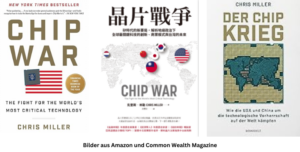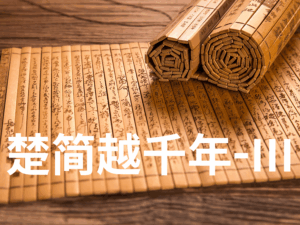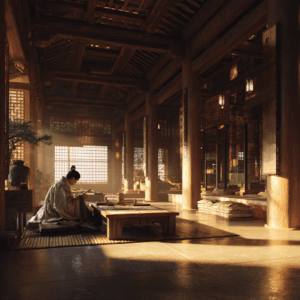In dem Lied “Frag nicht nach der Rückkehr” wird die emotionale Achterbahnfahrt einer unerwiderten Liebe auf eindrucksvolle Weise dargestellt.
Die Texte, von Liu Tao und Jin Lin verfasst, und die Musik, komponiert von Liu Tao, sind ein tiefgründiger Ausdruck von Sehnsucht, Verlust und Selbstreflexion. Die Lyrik des Liedes nimmt uns mit auf eine Reise durch die verborgenen Gefühle eines Herzens, das mit dem Stachel der unerfüllten Liebe durchdrungen ist.
Lassen Sie uns eintauchen in die poetischen Zeilen und die melodische Schönheit dieses Liedes, das uns daran erinnert, dass manchmal die schmerzhafteste Frage diejenige ist, die wir niemals stellen sollten: ‘Frag nicht nach der Rückkehr’.
Die wichtigen Begriffe aus dem Liedtext sind folgende:
- 心口 (Xīnkǒu) – Herzen, Mund
- 刺 (Cì) – Stachel
- 沉默 (Chénmò) – Stille, Schweigen
- 放肆 (Fàngsì) – Rücksichtslosigkeit, Hemmungslosigkeit
- 相思 (Xiāngsī) – Sehnsucht, Vermissen
- 天涯 (Tiānyá) – Am Ende der Welt, in der Ferne
- 思念 (Sīniàn) – Nachdenken, Sehnsucht
- 冷暖自知 (Lěng nuǎn zìzhī) – Sich der eigenen Gefühle bewusst sein
- 了解 (Liǎojiě) – Verstehen, Begreifen
- 心思 (Xīnsī) – Gedanken, Überlegungen
Mò wèn guī qī | Frag nicht nach der Rückkehr | 莫问归期
Sie sehen gerade einen Platzhalterinhalt von YouTube. Um auf den eigentlichen Inhalt zuzugreifen, klicken Sie auf die Schaltfläche unten. Bitte beachten Sie, dass dabei Daten an Drittanbieter weitergegeben werden.
Mehr Informationen藏进心口的刺
Cáng jìn xīnkǒu de cì
Ein Stachel im Herzen versteckt,
不枉寻 也如此
Bù wǎng xún yě rúcǐ
Nicht umsonst gesucht, so ist es auch.
沉默有时 最后因你放肆
Chénmò yǒu shí zuìhòu yīn nǐ fàngsì
Manchmal schweigen, am Ende wegen dir hemmungslos.
浓墨难沾心事
Nóng mò nán zhān xīnshì
Es ist schwer, tiefgreifende Angelegenheiten zu berühren.
寒夜怎寄相思
Hányè zěn jì xiāngsī
Wie kann man an einem kalten Nachtgedanken senden?
沉默有时 念想有时
Chénmò yǒu shí niànxiǎng yǒu shí
Manchmal schweigen, manchmal denken.
谁诀别相思成疾
Shuí jué bié xiāngsī chéng jí
Wer verabschiedet sich von der krankhaften Sehnsucht?
莫问天涯也莫问归期
Mò wèn tiānyá yě mò wèn guī qī
Frag nicht nach dem Ende der Welt, frag nicht nach der Rückkehr.
怎奈何无人了解
Zěn nàhé wúrén liǎojiě
Was soll man tun, wenn niemand versteht?
情断之时 冷暖自知
Qíng duàn zhī shí lěng nuǎn zìzhī
In Momenten der Trennung kennt man sich selbst.
谁诀别相思成疾
Shuí jué bié xiāngsī chéng jí
Wer verabschiedet sich von der krankhaften Sehnsucht?
莫问天涯也莫问归期
Mò wèn tiānyá yě mò wèn guī qī
Frag nicht nach dem Ende der Welt, frag nicht nach der Rückkehr.
怎奈何无人了解 我心思
Zěn nàhé wúrén liǎojiě wǒ xīnsī
Was soll man tun, wenn niemand versteht, was ich denke?
藏进心口的刺
Cáng jìn xīnkǒu de cì
Ein Stachel im Herzen versteckt,
不枉寻 也如此
Bù wǎng xún yě rúcǐ
Nicht umsonst gesucht, so ist es auch.
沉默有时 最后因你放肆
Chénmò yǒu shí zuìhòu yīn nǐ fàngsì
Manchmal schweigen, am Ende wegen dir hemmungslos.
浓墨难沾心事
Nóng mò nán zhān xīnshì
Es ist schwer, tiefgreifende Angelegenheiten zu berühren.
寒夜怎寄相思
Hányè zěn jì xiāngsī
Wie kann man an einem kalten Nachtgedanken senden?
沉默有时 念想有时
Chénmò yǒu shí niànxiǎng yǒu shí
Manchmal schweigen, manchmal denken.
谁诀别相思成疾
Shuí jué bié xiāngsī chéng jí
Wer verabschiedet sich von der krankhaften Sehnsucht?
莫问天涯也莫问归期
Mò wèn tiānyá yě mò wèn guī qī
Frag nicht nach dem Ende der Welt, frag nicht nach der Rückkehr.
怎奈何无人了解
Zěn nàhé wúrén liǎojiě
Was soll man tun, wenn niemand versteht?
情断之时 冷暖自知
Qíng duàn zhī shí lěng nuǎn zìzhī
In Momenten der Trennung kennt man sich selbst.
谁诀别相思成疾莫问天涯
Shuí jué bié xiāngsī chéng jí mò wèn tiānyá
Wer verabschiedet sich von der krankhaften Sehnsucht? Frag nicht nach dem Ende der Welt,
也莫问归期
Yě mò wèn guī qī
frag nicht nach der Rückkehr.
怎奈何无人了解 我心思
Zěn nàhé wúrén liǎojiě wǒ xīnsī
Was soll man tun, wenn niemand versteht, was ich denke?
谁诀别相思成疾
Shuí jué bié xiāngsī chéng jí
Wer verabschiedet sich von der krankhaften Sehnsucht?
莫问天涯也莫问归期
Mò wèn tiānyá yě mò wèn guī qī
Frag nicht nach dem Ende der Welt, frag nicht nach der Rückkehr.
怎奈何无人了解
Zěn nàhé wúrén liǎojiě
Was soll man tun, wenn niemand versteht?
情断之时 冷暖自知
Qíng duàn zhī shí lěng nuǎn zìzhī
In Momenten der Trennung kennt man sich selbst.
谁诀别相思成疾
Shuí jué bié xiāngsī chéng jí
Wer verabschiedet sich von der krankhaften Sehnsucht?
莫问天涯也莫问归期
Mò wèn tiānyá yě mò wèn guī qī
Frag nicht nach dem Ende der Welt, frag nicht nach der Rückkehr.
怎奈何无人了解 我心思
Zěn nàhé wúrén liǎojiě wǒ xīnsī
Was soll man tun, wenn niemand versteht, was ich denke?

《节奏文明观|声音篇 —— 声音如何显形文明:世界在频率里被记住》
声音,不只是被听见,而是文明显形的方式。
从楚简的五音、乐风,到楚辞的呼唤与叩问;
从高铁美学的香气、色彩、戏曲、工艺与乐器,
到速度时代被重新激活的气息结构——
声音将这些异质的材料对齐,
让古今在同一频率上共振。
本篇追问:
一个文明,是如何通过声音保持呼吸、记忆与秩序的?
Sound is not merely heard—it is how a civilization becomes visible.
From the Five Tones and musical governance in Chu bamboo texts,
to the chants and inquiries of the Chu Ci;
from the sensory systems of High-Speed Rail Aesthetics—
aroma, color, opera, craftsmanship, instruments—
to the breath-structures reactivated in the age of speed,
sound aligns these disparate materials into a single field of resonance.
This essay asks:
How does a civilization sustain its breath, memory, and order through sound?

《节奏文明观|语法篇 ——节奏如何生成语法:意义是从停顿里长出来的》
本篇〈语法篇〉从节奏文明的视角,重新理解语法与意义的生成方式。语法并非源自规则,而是节奏在停顿中形成的秩序;意义并非来自解释,而是从停顿里生长出来。文章经由三条路径展开:感官的停顿(香气、色彩、声音、器物)、思想的停顿(楚简的断裂语法)、空间的停顿(地景与折返),呈现当停顿被排列,语法便显形;当语法被看见,文明重新获得呼吸。
This essay rethinks grammar through the lens of Rhythm Civilization. Grammar does not arise from rules but from rhythm settling into pause; meaning does not come from explanation but grows from suspension. Through sensory pauses, conceptual pauses in Chu bamboo-slip syntax, and spatial pauses in landscape, the text shows how arranged pauses generate grammar and how visible grammar allows civilization to breathe again.

《节奏文明观|系统篇 ——系统如何形成:从一条线,到一整个世界》
《系统篇》探问一个被现代世界忽略的核心:文明中的“系统”,并不是被规划、设计、建构出来的,而是从节奏中自然生长的。一条手势的线、一段呼吸的速度、一条铁轨的方向、一种工艺的重复动作,当这些节奏累积到足够密度,系统便从“线”的稳定,走向“面的对拍”,再走向“体”的自我维持。本篇解析系统如何形成三阶段的生成路径:起点是一条稳定呼吸的线;生成是线与线开始对拍、连成面;成熟是结构自我复制并成为文明的呼吸体系。系统不是框架,而是节奏的结晶;不是工程图,而是一个世界自动组织自己的方式。在这个时代,重新理解系统如何被听见、被调频、被唤醒,是人类重新学习文明的关键一步。The System Chapter explores a forgotten truth of civilization: systems are not designed—they emerge from rhythm. A single stroke of the hand, the pace of a breath, the direction of a railway line, the repetitive motion of a craft—when these rhythms accumulate with enough density, a system naturally evolves from the stability of a line, to the synchronized convergence of patterns, and finally into a self-sustaining organism. This chapter unfolds the three-phase pathway of system formation: origin as a line that breathes steadily; formation as lines begin to resonate and form a field; maturation as structure replicates itself and becomes a living rhythm of civilization. A system is not a framework but the crystallization of rhythm, not a diagram but a world that organizes itself through resonance. In an age overloaded with structures yet starved for coherence, relearning how systems are heard, aligned, and awakened becomes essential for recovering a deeper sense of civilization.
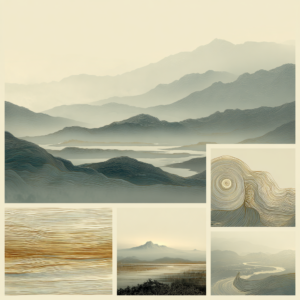
《节奏文明观|地景篇 —— 地景的学习法:用空间的节奏理解文明》
本篇探讨“地景如何成为一种学习方式”。空间具有节奏——在距离、密度与停顿中,影响我们感知记忆、行动与文明。透过阅读山河、城市与路径的节奏,我们重新理解文明如何透过身体被感受与学习。
This essay explores how landscapes become a form of learning. Space carries rhythm — in distances, densities, and pauses — shaping how we perceive memory, movement, and civilization. By listening to the tempo of mountains, cities, and pathways, we rediscover how culture is formed through the body’s response to space.
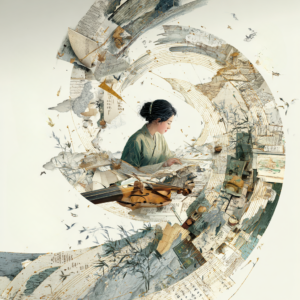
《节奏文明观|体质篇 —— 模组型体质的学习法:以节奏为师,以身体学习文明》
这篇〈模组型体质的学习法〉是我第一次认真回望,我这一生到底是怎样学习的。事实上,我的学习并不是只有直觉,也不是不用头脑,而是:身体先感到,头脑才开始理解;直觉先开门,思考随后把结构建起来。每当我进入一个陌生领域,我不是从概念开始,而是从感受与节奏开始——一旦身体抓到节奏,头脑便能迅速组织、推理、整合。无论是乐器、戏曲、香气、工艺、文学,或是楚文明的六十篇写作,我的路径始终一样:感知点亮入口,思考完成结构,文明在两者之间自动显形。我终于明白:我学习的不只是知识,而是世界如何运作。
This essay is my first honest attempt to understand how I have learned throughout my life. My learning has never been purely intuitive, nor purely intellectual. The order is simply different: the body senses first, and the mind understands afterward. Intuition opens the door; thinking builds the structure. Whenever I enter a new field, I do not begin with concepts but with sensation and rhythm—once my body catches the rhythm, my mind can quickly organize, reason, and integrate. Whether in instruments, opera, scent, craft, literature, or the sixty essays on Chu civilization, the pattern remains constant: sensation lights the entry, intellect completes the architecture, and the structure of a civilization emerges between the two. Only now do I realize that I was never learning “knowledge” alone—I was learning how the world works.

《我的人生,是一部楚居——一个非线性学习者的迁徙与文明回归》
这是一篇以《楚居》的逻辑重新阅读人生的个人叙事:七所大学、七个科系、七座城市、七种工艺、七种乐器的迁徙与学习经验。那些曾被视为“分散”的路径——学业、城市、工艺、音乐——在楚人的徙居节奏中重新排版,显现为一个非线性学习者独特的生命结构。由此展开一条“迁徙与文明回归”的路径:漂泊不再是迷失,而是一种自我命名的方式,让生命的多声部共同指向同一个根。
This essay rereads a life through the logic of Chu-Ju: seven universities, seven disciplines, seven cities, seven crafts, and seven musical instruments—each a trace of migration and learning. What once appeared as scattered paths—academia, geography, craft, and music—rearranges itself through the Chu rhythm of continual relocation, revealing the underlying structure of a nonlinear learner’s life. From this emerges a journey of migration and civilizational return: wandering becomes not a sign of being lost, but a form of self-naming, allowing the many voices of a life to point toward the same root.


